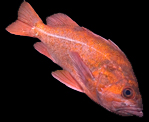
Kawika Chetron on Underwater Photography
Underwater photography frustrates me to no end. At first glance, it seems to provide an obvious and easy mechanism for answering the frequent queries from my friends and acquaintances about why it is that I spend so much of my life underwater. And, truth be told, it is a better device for answering these questions than any other I've discovered. Yet, numerous obstacles stand between a diver and the images he may so dearly wish to capture on film. There's the camera itself. Unrecognizable as a relative of the little point and shoot one may whip out of a shirt pocket at cocktail parties, a capable underwater rig likely possesses strobe arms spanning five feet. In even a moderate current, its drag substantially reduces ones swimming efficiency, something that may evoke memories of one's first, hapless attempt at kiteboarding. A competent underwater photographer almost certainly will have the essential set of diving skills well mastered. One such skill is the ability to maintain a static position in the water column without kicking or otherwise flailing about. In theory (or, perhaps in the tropics) this allows one to nonchalantly approach a subject, and effortlessly take a picture. In practice, water movement from ocean swell moves the photographer back and forth several feet every twelve seconds or so. One may try to hold on to something with one hand and take a picture with the other. This works sometimes, but often, even if you're a rock climber, it's just too difficult to hold a set position. Lying down on the seabed seldom works. Apart from the damage this does to the reef, it also kicks up debris which often destroys the shot. In the end, many shots are simply taken via the "fly by" method. When using this technique, the photographer resigns himself to the water's ebb and flow, setting up a shot and shooting quickly as he rushes past a subject. Often, there is not even time to look through the viewfinder. The camera may even be held with the photographer's arms fully extended. When the viewfinder is used, a diver must peer though the combination of a dive mask, a camera housing, and the camera viewfinder. It's something of a wonder that one can even identify a subject at all. Of course, many of those subjects are quite shy around divers and may be fleeing in terror from the bizarre creature with flashing lights that makes horribly loud regulator noises. In fact, since one has to get quite close to a subject to photograph it well, some of the most commonly seen reef creatures are almost never photographed successfully. The ability to approach shy subjects is often cited as a compelling reason for using closed circuit SCUBA. Divers using such equipment can avoid most of the regulator noise and bubbles associated with traditional, open circuit equipment. In my experience, however, the camera itself causes greater problems than the photographer. I'm somewhat thankful for this, as I suspect I'd be compelled to spend untold hours, more even than I already spend on my camera, maintaining closed circuit gear were I convinced it would translate into better photographs.

